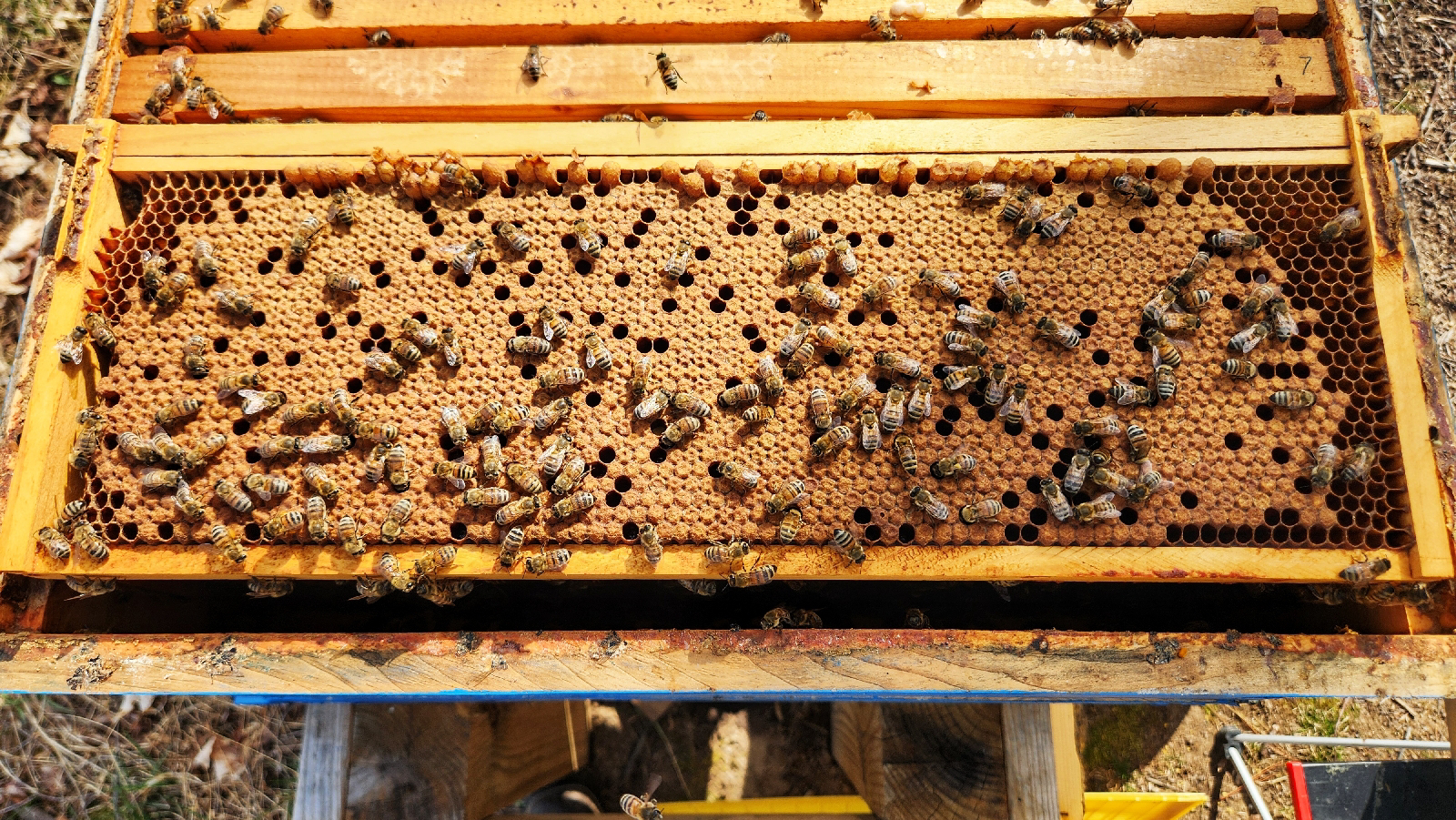The biggest pest of honeybees is the varroa destructor mite, a tiny arachnid native to Asia that has spread around the world. Like ticks, mites spread disease, so managing them is crucial to keeping hives healthy. This is the part of beekeeping that really feels like farming.
Testing for mites is pretty direct: dump a frame or two of bees into a bucket; scoop a measuring cup filled with bees (about 300); drop them in a special device with alcohol. Put on the top, swirl the cup. The alcohol kills the bees and the mites, which fall through the inner basket and collect in the bottom of the cup.
It seems cruel, but 300 bees out of a hive with 30,000 or more is a small sacrifice that will be replaced in a few days -- aa long as you don't accidentally include your queen in the sample.
This first test of the year came up clean: No mites in three of four hives. The Blue hive had a single mite in its sample. Ideally, you want 9 mites or fewer in a sample. That's 3%. Above that, it's time to treat the hives.
Commercial keepers smoke their hives with oxalic acid, which require them to wear a respirator. I prefer formic acid, which comes as patties you put in the hive for two weeks. With no mites to speak of so far, I'll hold my treatments until later in the summer.









No comments:
Post a Comment